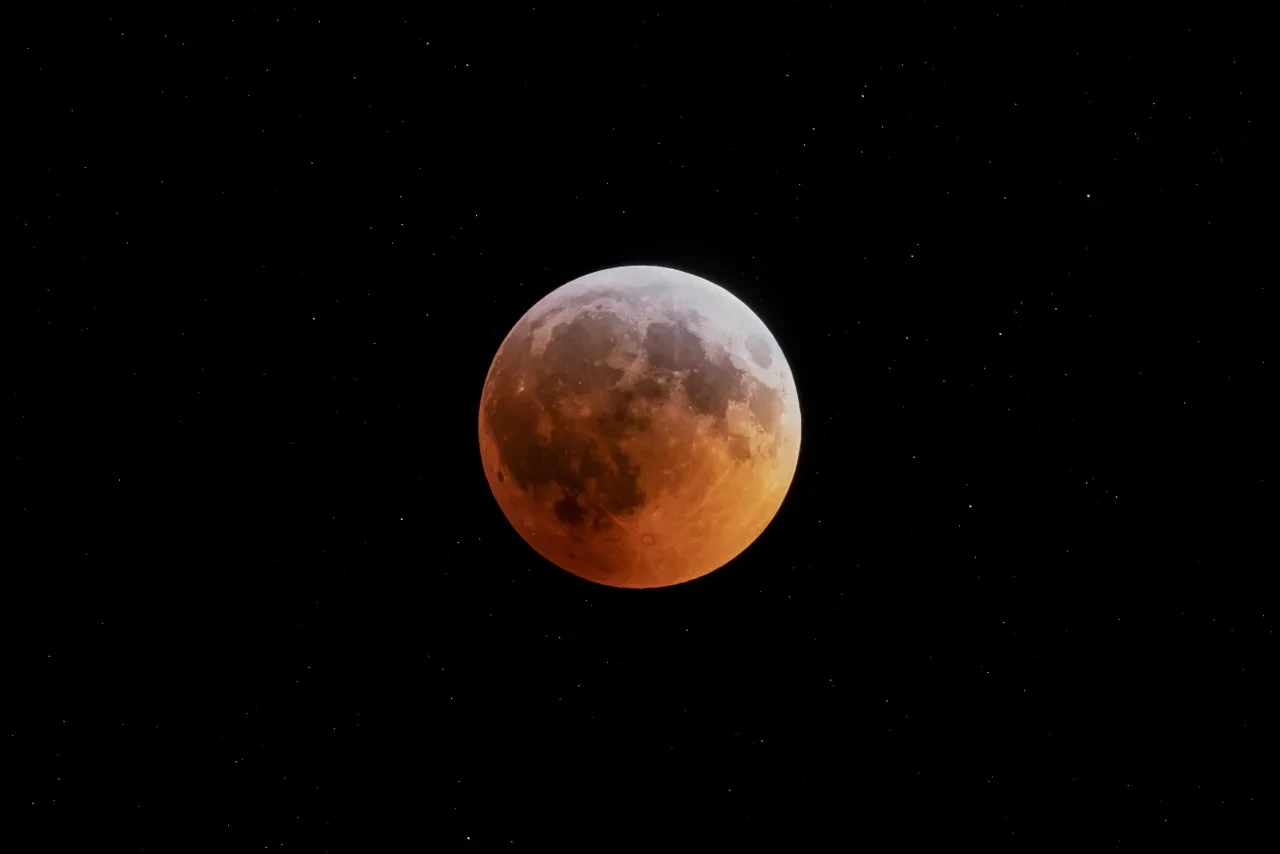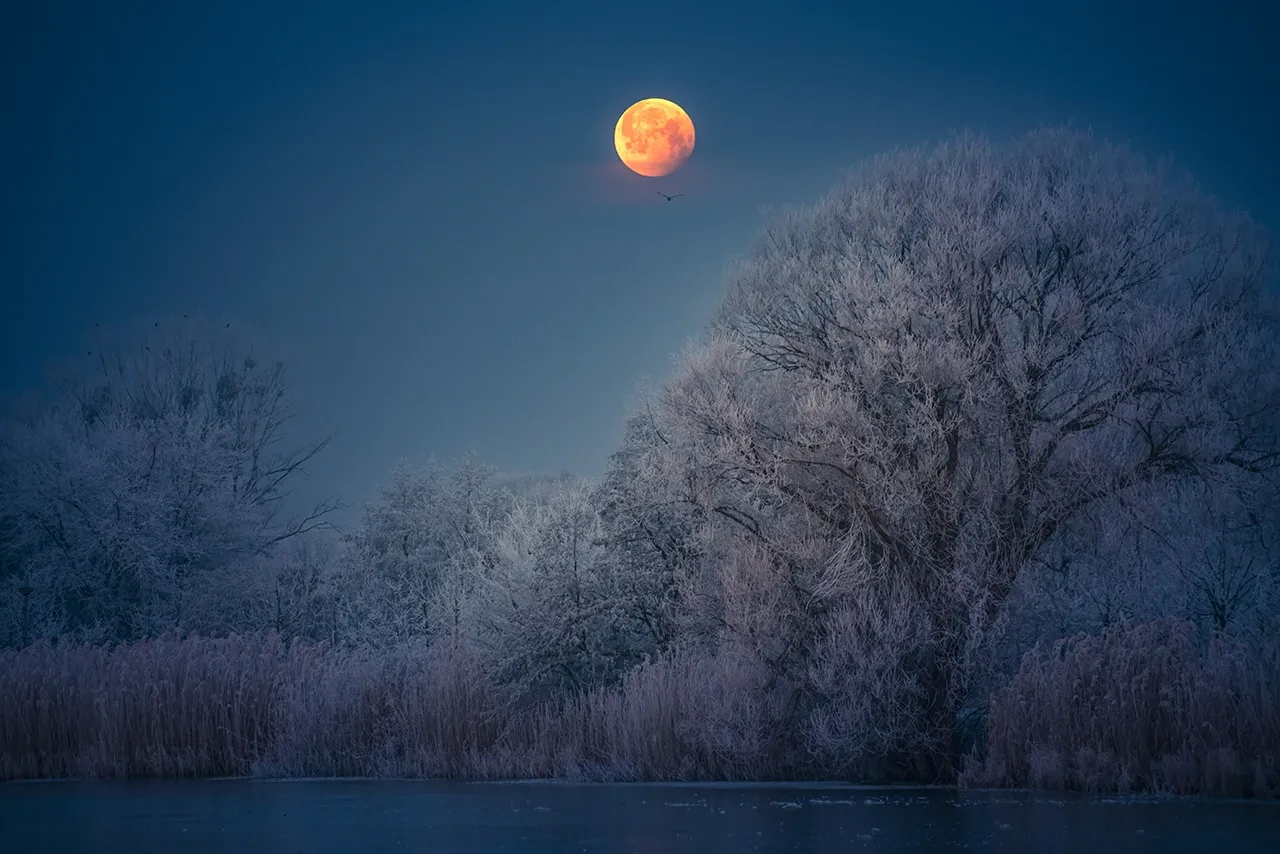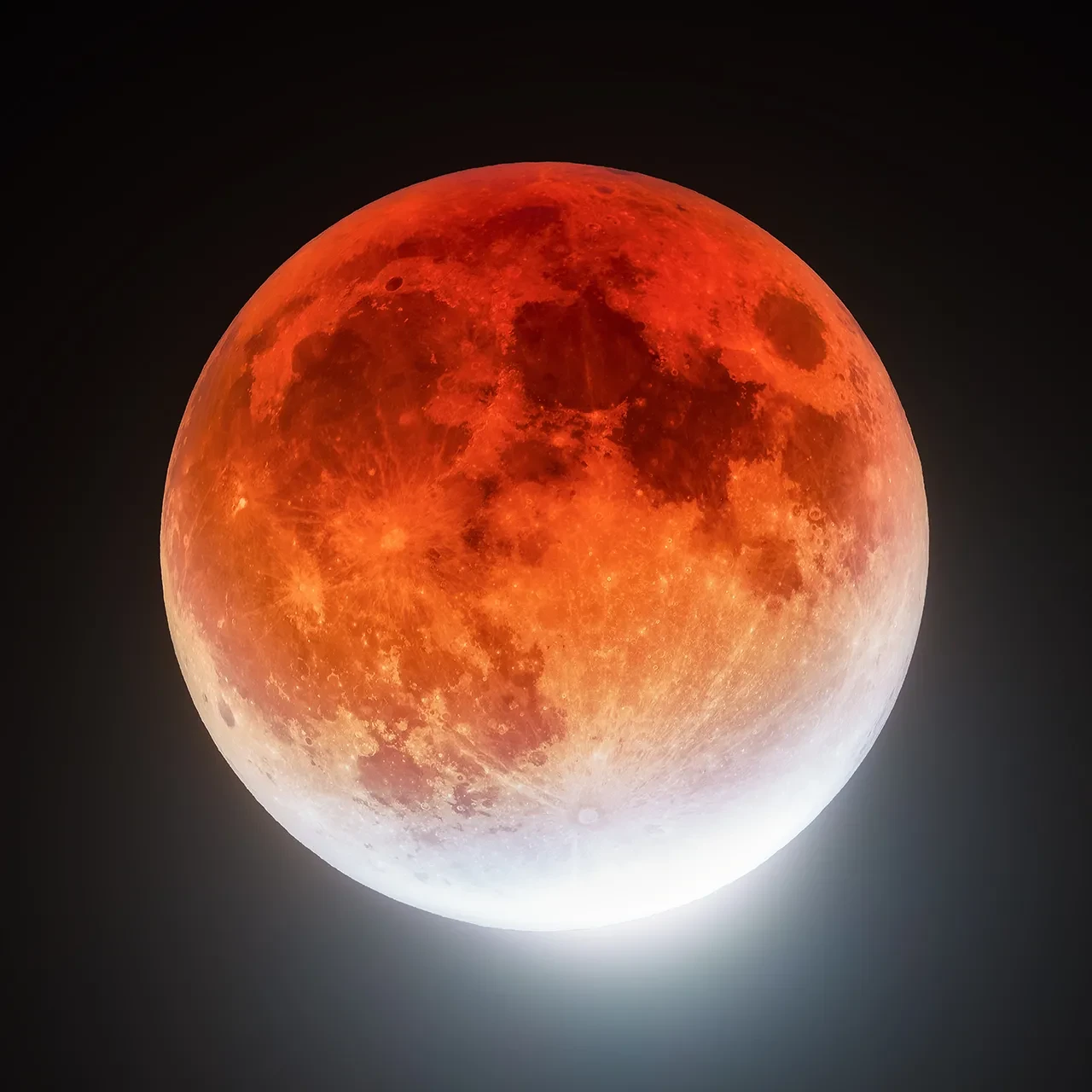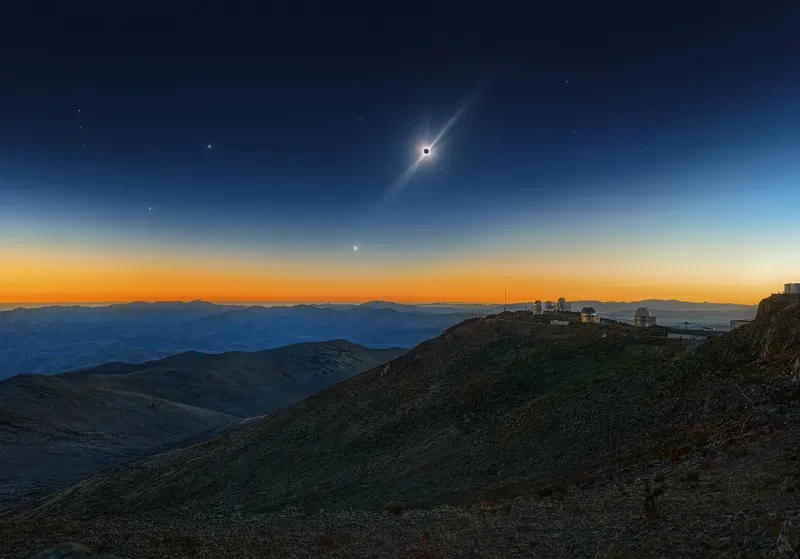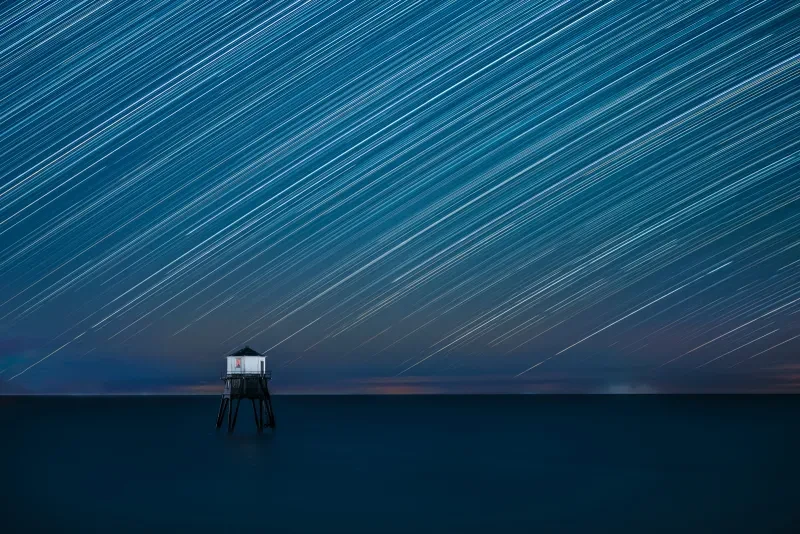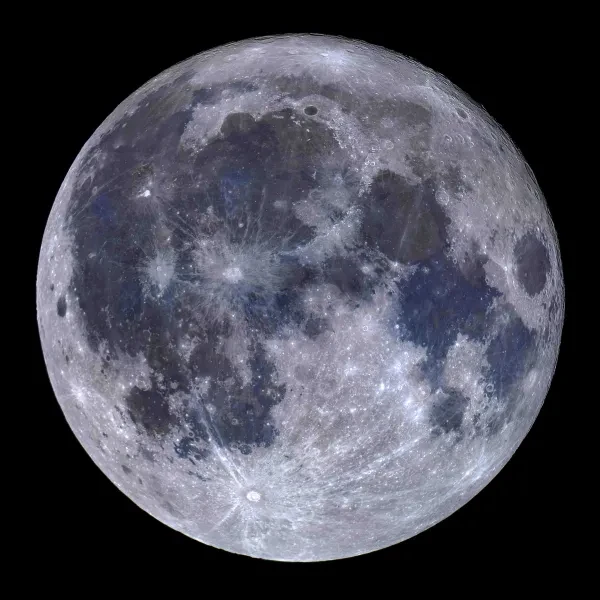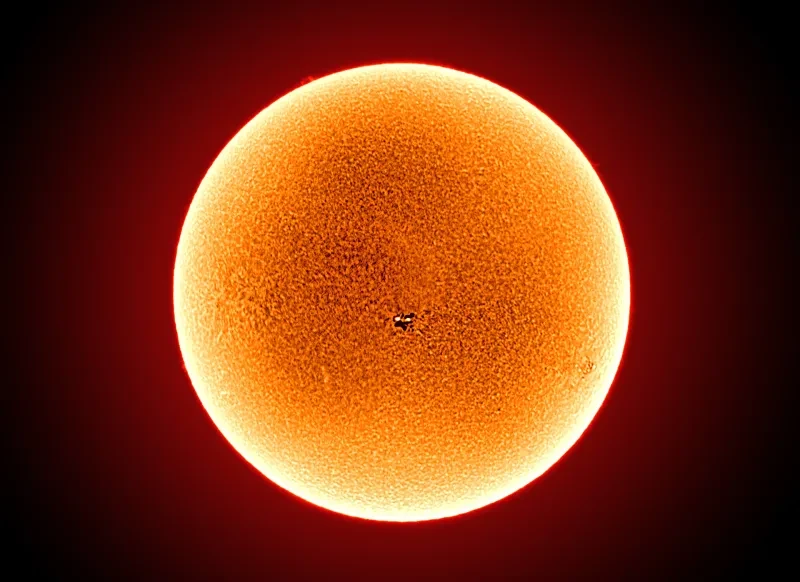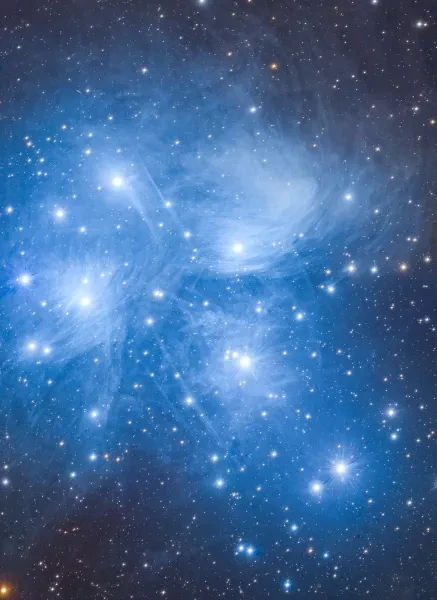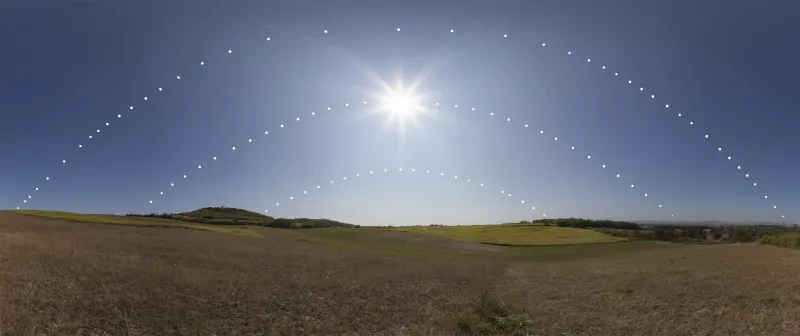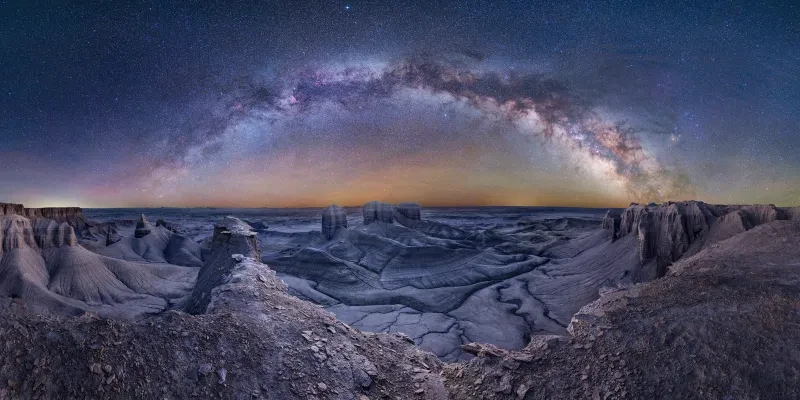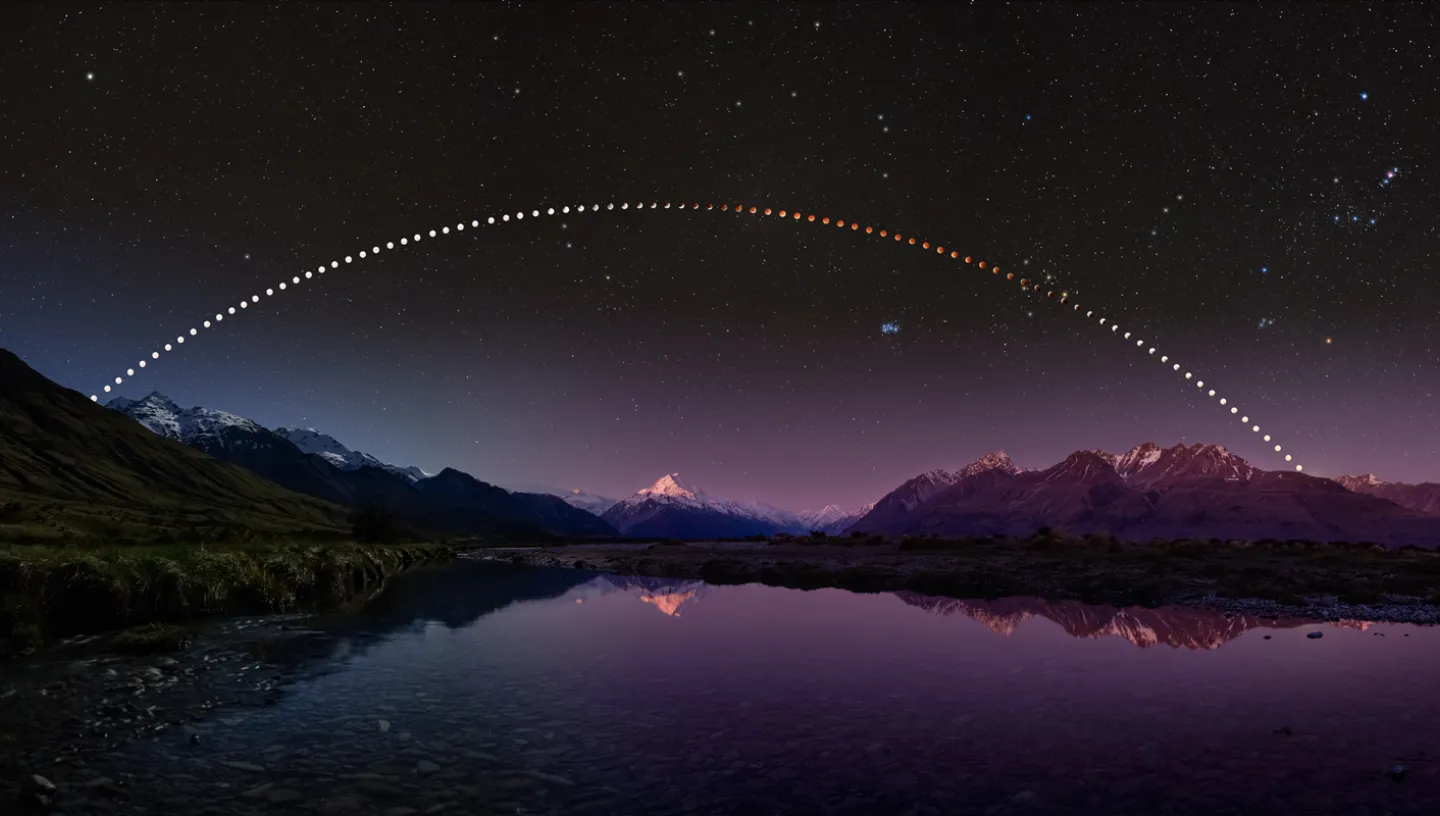
What is a lunar eclipse?
An eclipse of the Moon occurs when the Earth lies directly between the Sun and the Moon, and the Moon lies in the shadow of the Earth.
What are the different types of lunar eclipse?
For a total lunar eclipse to happen, all three bodies – the Sun, the Earth and the Moon – lie in a straight line. This means that the Moon passes through the darkest part of the Earth’s shadow - the umbra.
But a lunar eclipse isn't always 'total'. There are actually three different types of lunar eclipse.
Total lunar eclipse
During a total lunar eclipse, the Moon usually turns a deep, dark red because it is illuminated by light that has passed through the Earth's atmosphere and has been bent back towards the Moon by refraction.
Partial lunar eclipse
A partial lunar eclipse happens when the Moon passes through the Earth's penumbra (the outer region of the Earth’s shadow), and only a section of it passes through the umbra (the darkest part of the Earth’s shadow).
On this occasion only a very small section of the Moon will be covered by the umbra at maximum eclipse, though the whole northern half of the Moon will be darkened by the penumbral shadow.
Penumbral lunar eclipse
A penumbral lunar eclipse occurs when the Moon travels only through the outer, fainter part of the Earth's shadow, or 'penumbra'. This happens when the Earth moves between the Sun and Moon but the three do not form a perfectly straight line.
The penumbra causes only a slight darkening of the Moon's surface, with the Moon still exposed to some direct sunlight, so this type of eclipse is easy to miss.
When is the next lunar eclipse in the UK?
The table below shows upcoming UK lunar eclipse dates. Details and times given are for the Royal Observatory's home in London and may vary slightly around the country.
| Date | Type of eclipse | What you'll see |
| 28 August 2026 | Partial lunar eclipse | The partial lunar eclipse will begin at 3.33am BST. The Moon will move further into Earth's shadow until the maximum of the eclipse at 5.12am, when approximately 90% of the Moon will be in Earth's umbra, the darkest part of its shadow. After this, the Moon will slowly move out of the umbra until the Moon sets and the eclipse is no longer visible - around 6.15am. The Moon will be increasingly low on the horizon as the eclipse progresses, so you'll need to find a high point with a clear view to the southwest to see the best of this event. |
How to see a lunar eclipse
See astronomer Tom Kerss's top tips for observing and photographing a lunar eclipse in the video below.
When were the last lunar eclipses in the UK?
7 September 2025 - The Moon rose above the horizon just in time for us to see a bit of this total lunar eclipse from the UK. As the Moon was very low on the horizon during the peak it was difficult to see the total portion of the eclipse, but the partial stages were more easily visible.
14 March 2025 partial lunar eclipse - During this eclipse, almost all of the Moon was in Earth's umbra. However, the setting Moon was very low on the horizon and set before the total portion of the eclipse.
28 October 2023 partial lunar eclipse - A partial lunar eclipse was visible throughout all of Europe, Asia, Africa, and western Australia. From the UK we only saw a small fraction of the full Moon pass into the umbra. At its maximum, which occurred at 21:15, just 12% was in Earth's shadow, with 6% in the umbra.
16 May 2022 total lunar eclipse - This total lunar eclipse was visible over South America, most of North America and parts of Europe and Africa. People in the UK were able to see the lunar eclipse at totality when the entire Moon turned red. The entire eclipse lasted for more than five hours, however, observers in the UK could only see the eclipse from 2.32am – 5.10am as the Moon had set below the horizon by the end of this period.
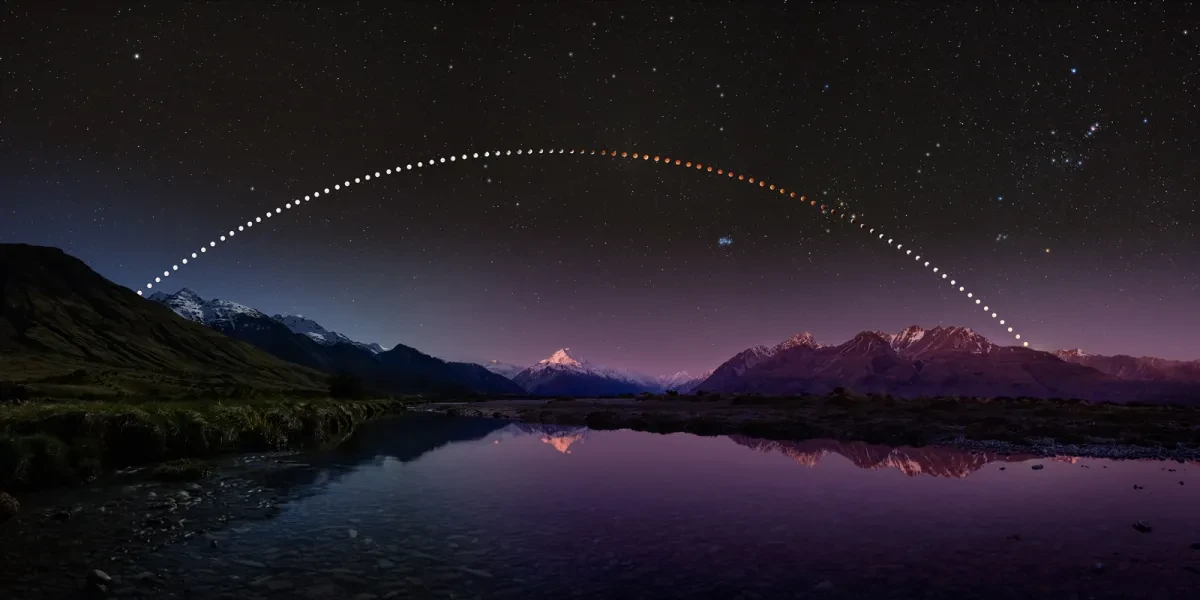
In focus
Passage of a Lunar Eclipse by Mike White
Taken at Aoraki Mackenzie International Dark Sky Reserve, South Island, New Zealand, 8 and 9 November 2022
"This image was taken during the total lunar eclipse of 8 and 9 November 2022 as viewed from the Tasman Valley. New Zealand’s tallest peak, Aoraki stands in the centre of the frame," writes photographer Mike White.
"The path of the Moon across the sky was plotted using the panoramic sequences and the detailed telescope exposures were manually blended for HDR then meticulously resized and plotted to create the final image. The final image encompasses a night spent viewing the eclipse rather than capturing a single moment."
How often do lunar eclipses happen?
A lunar eclipse happens between two to five times a year, with a total lunar eclipse occurring at least two every three years.
Why doesn't a lunar eclipse happen every month?
A lunar eclipse occurs during the full moon phase but an eclipse does not happen every month, even though the lunar cycle is 29.5 days. This is because the moon’s orbit is inclined by 5˚ relative to the Earth’s orbit. This means that as it travels around the Earth it also moves up and down in its orbit.
How long does a lunar eclipse last?
Since the Earth is around four times wider than the Moon, its shadow can darken the moon for up to five hours depending on conditions. Lunar eclipses can be seen between two and five times every year – from somewhere on the Earth’s surface. Total lunar eclipses are much rarer from one particular location.
What is a supermoon?
When the moon is close to perigee, the closest point to Earth in its orbit, it makes the moon appear slightly larger than usual. This phenomenon has been dubbed a “supermoon”. Much like “blood moon” it is not an official astronomical term. A “supermoon” will appear up to 7% larger than a regular full moon.
Find out more about supermoons
Why is a lunar eclipse called a 'blood moon' – and are they actually red?
People sometimes refer to a lunar eclipse as a ‘blood moon’ because of the way the Moon can turn a deep coppery red colour during its eclipse.
However, the colour of the Moon during totality will depend on the global state of dust in the Earth’s atmosphere. Dust in the atmosphere blocks out the higher frequency blue light waves, but the longer wavelength of red light is able to still come through.
Find more astronomy guides
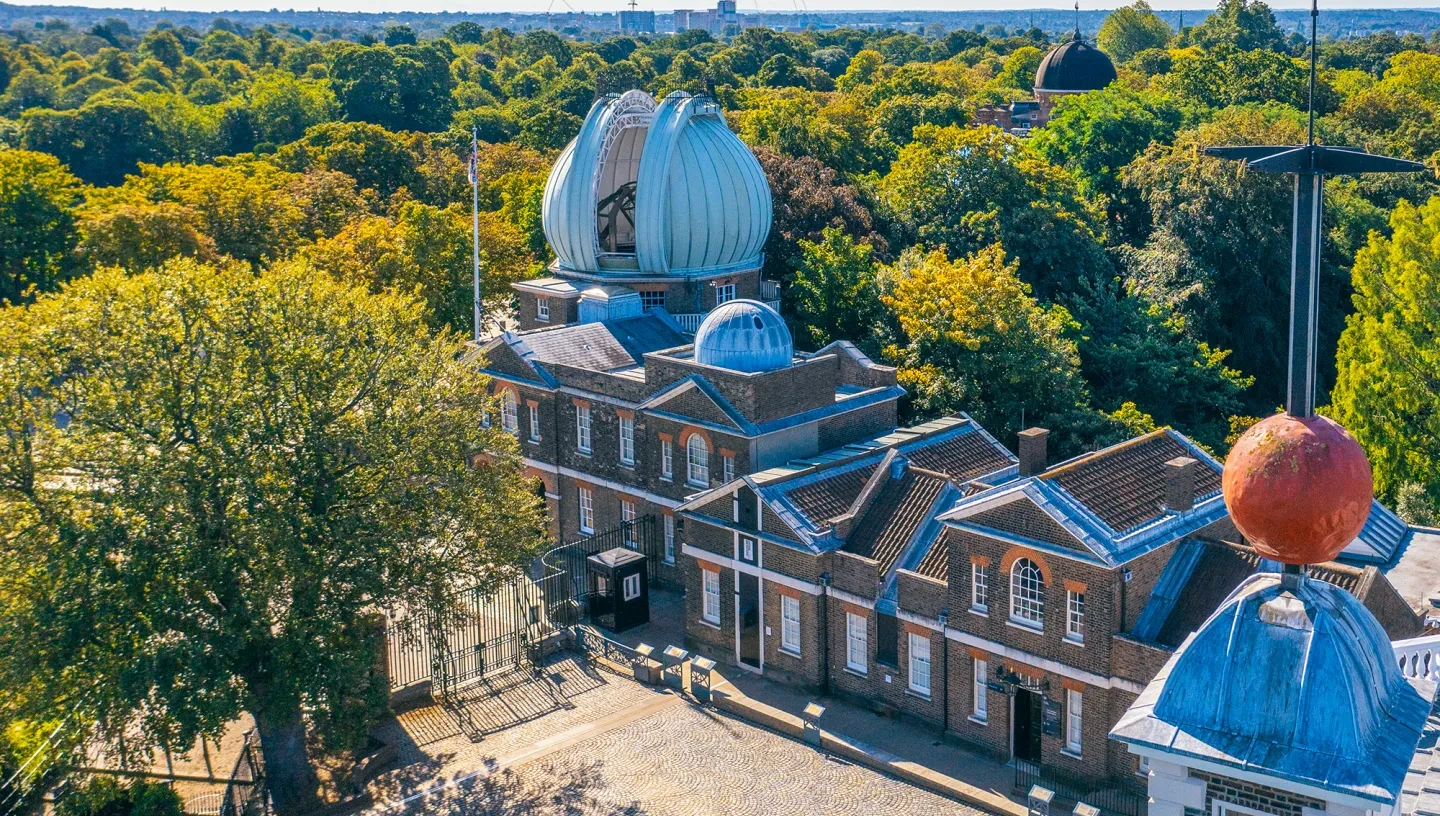
Visit the Royal Observatory
Header image: Passage of a Lunar Eclipse © Mike White - Astronomy Photographer of the Year 2023 shortlisted in the Skyscapes category
